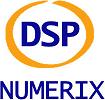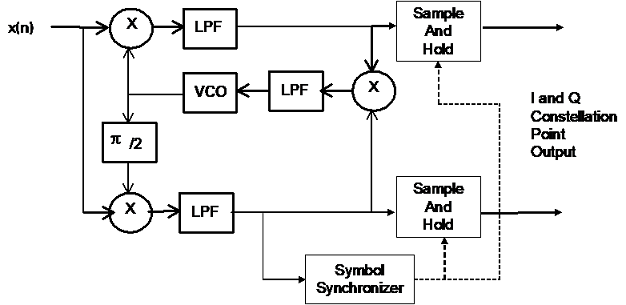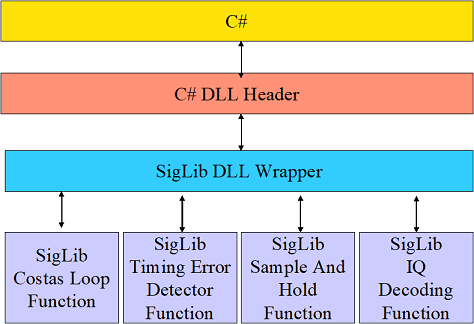
 |
Case Study: V.26 Private Wire Soft-modem For The Los Angeles Department Of Public Works |
Introduction
For the last fifteen years the Los Angeles Department of Public Works (LADPW) have used proprietary V.26 (See V.26 Alternative B Overview side-panel) voice-band private wire modems to remotely monitor the water levels of various ground water recharge spreading basins along the Los Angeles river. This monitoring is critical at times of high rain fall to ensure that localised flooding is kept to a minimum.V.26 Alternative B Overview V.26 Alternative B uses p/4 Differential Quadrature Phase Shift Keying. p/4 DQPSK modulatestwo bits per symbol and uses the following phase transitions for the data:
the differences in the carrier phase rather than the absolute phase values. V.26 uses the following frequencies: Data rate - 2400 bps Baud rate - 1200 Baud Carrier freq. - 1800 Hz A sample rate of 48 KHz was chosen for the test system with a view to reduce this to 12 KHz for deployment to reduce the data processing requirements. |
Implementation Details
The original modems were no longer available to purchase and the LADPW had stockpiled a few just in case of need or vandalism. These devices were now in short supply so a future proof solution was required to integrate into the existing system. Figure 1 – The V.26 demodulator which includes the Costas Loop carrier phase detector and the Early-late-gate timing error detector for the symbol timing. |
 Figure 2 - The layered approach to integrating the SigLib™ DLL into the host development environment. |
The Future
As described in the introduction, the original plan for the project was to replace the central office equipment but the success of the project has allowed the engineers at the LADPW to expand the scope to develop portable test systems for use in the field, which greatly simplifies the network testing. A further development is to use the soft-modems to replace the field modems as they become unserviceable.Conclusion
The final deployed soft-modems execute on desktop PCs and use the integrated sound card for the I/O. This solution was both cost effective and flexible. As a further benefit, the software solution ensures that the modems will never again become obsolete.References
[1] Oppenheim, A. V. and Schafer, R. W., (1989), "Discrete Time Signal Processing", Prentice-Hall Inc., USA.Copyright© 2024 Delta Numerix.
Permission is granted to create WWW pointers to this document. |